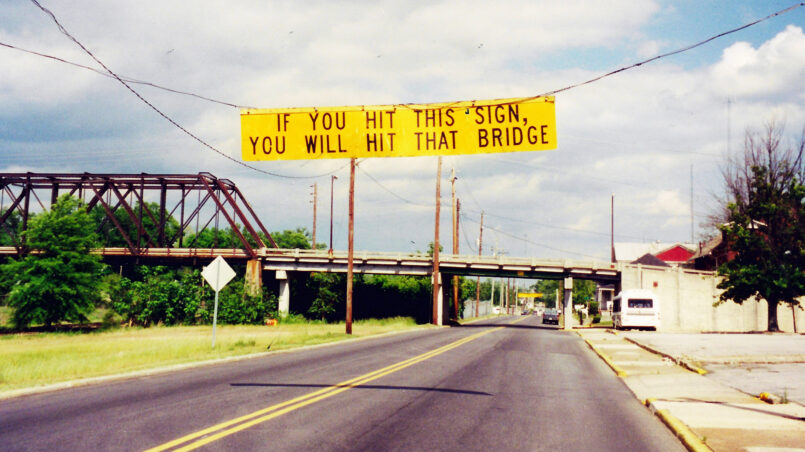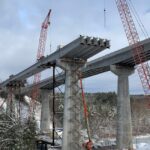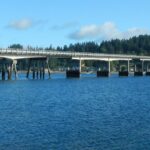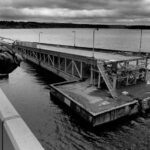The State of Texas, which has almost 9% of the 619,622 bridges in the United States, reported about 100 bridge strikes by motor vehicles in 2019. The State of New York (3%) reported nearly 1,100 bridge strikes between 2015 and 2020. Texas spends about $6.7 million annually repairing damage due to bridge strikes, while the Commonwealth of Virginia (2%) spends about $2 million. Those are pretty sobering statistics. Such strikes are known as overheight hits in the industry, meaning the vehicle or load that makes contact was too tall to make it under the bridge.
But even more concerning is the fatality statistics of such collisions. According to the National Highway Traffic Safety Administration, between 2014 and 2018, 13 people died as a result of large trucks striking a bridge overpass. In this edition of TheBridgeGuy, we’ll discuss overheight hits, how engineers address them and what ultimately causes them.
The likelihood of a bridge getting hit depends on variables such as the percentage of trucks on a particular route, a statistic known as the Average Daily Truck Traffic (ADTT), the vertical clearance and the availability of alternate routes. States with older infrastructure – such as New England and much of the eastern seaboard – probably have more bridges with substandard vertical clearance. Many of New York’s parkways forbid trucks, buses and tall vehicles from using these routes because many of the bridges on the parkways date to the 1930’s and 40’s and were designed with cars in mind.
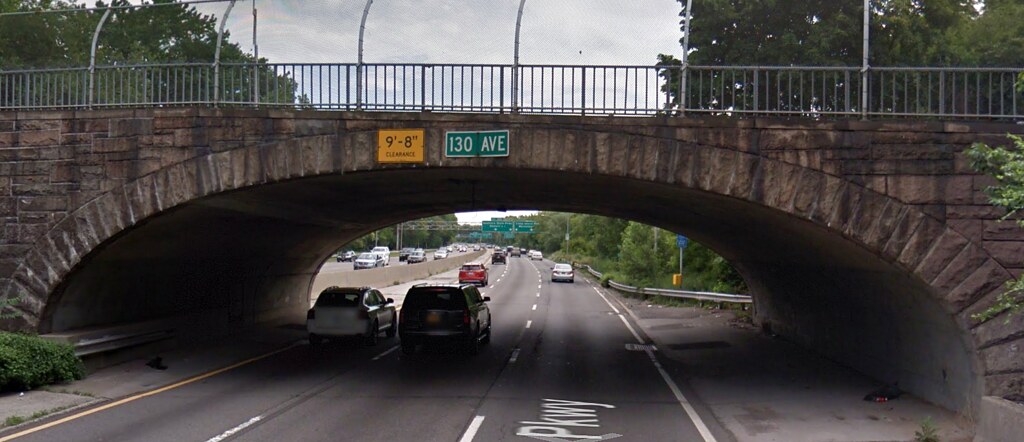
Federal Highways, through the various public bridge owners across the country, requires a database be maintained of various geometric data on bridges. Probably the most important bit of data collected is the vertical clearance under a bridge and over a bridge, depending on the bridge’s function. This is usually captured through a clearance card. Inspectors will measure the vertical clearance of a bridge in the traveled way (between the foglines) and note the point of minimum vertical clearance for each direction of traffic.
A bridge’s vertical clearance will usually remain unchanged, unless something on or around the bridge changes. Pavement overlays at the point of minimum clearance can change the value, often reducing the clearance available. New signage on a route or lighting changes could impact the clearance as well.
Generally, 16 feet 6 inches is considered the standard design vertical clearance minimum for new bridges. This is for bridges over other roadways and does not consider railroad requirements – that is a whole separate blog post. However, many existing bridges were built to a lower standard. For bridges with a clearance lower than 15 feet 3 inches, low clearance signs are required.
Now is that sign you see on the highway telling you the vertical clearance accurate? Yes and no. Bridges are typically signed for a clearance that is three inches lower than the actual value. Why do bridge owners do this – isn’t that like setting your clock ahead five minutes so you won’t be late for work? This is considered a safety factor which allows for transient changes in clearance due to thermal movement and ice accumulation, both of which are not considered in measurement calculations. So the next time you see or hear about an overheight hit, you know that vehicle was at least three inches over the posted clearance.
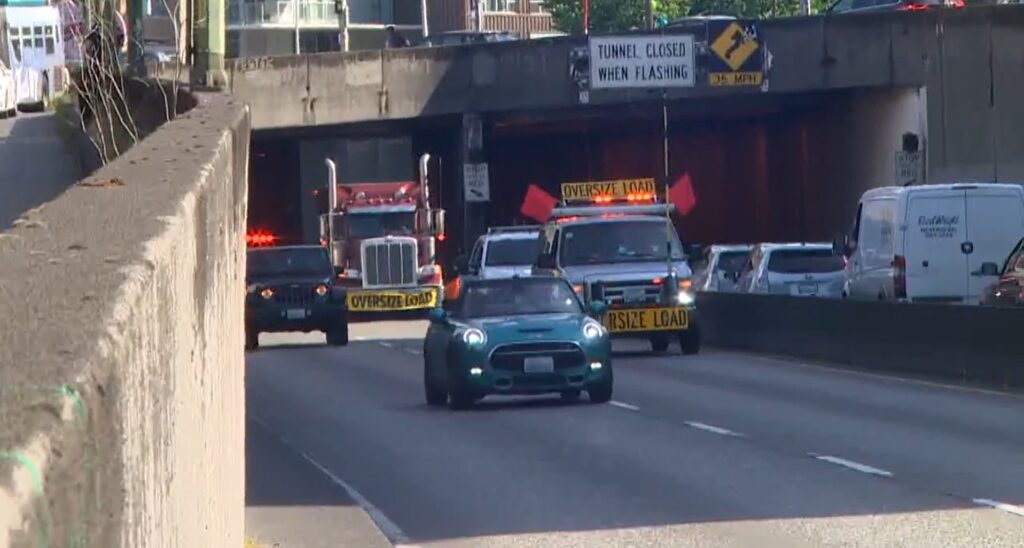
Low overpass bridges at an exit are easy to detour around. The truck simply exits before the bridge and enters the highway again using the on ramp. But sometimes signs get missed. Indeed, many agencies are implementing bridge strike prevention measures – like overheight detection systems – to get driver’s attention. Many overheight vehicles will use pilot cars with flexible poles to match the truck behind and they can radio the truck driver when a low bridge is encountered, allowing the truck to detour around. But this only works if the pilot car is sufficiently ahead of the truck to be an effective warning. Other detection systems only work if the driver is paying attention. And an alarming trend is being seen where bridges still get struck despite these new countermeasures.
Trucking companies that run overheight trucks are required to plan their routes. They are responsible for their loads. Like any other collision with another vehicle, the company would be liable for any property damage caused by the truck. And that can be expensive. According to the director of Tennessee (3%) Department of Transportation’s structures division repairing damage to a bridge from an overheight hit can cost between $500,000 and $1 million, thus it is in the trucking companies’ best interests to not hit bridges.
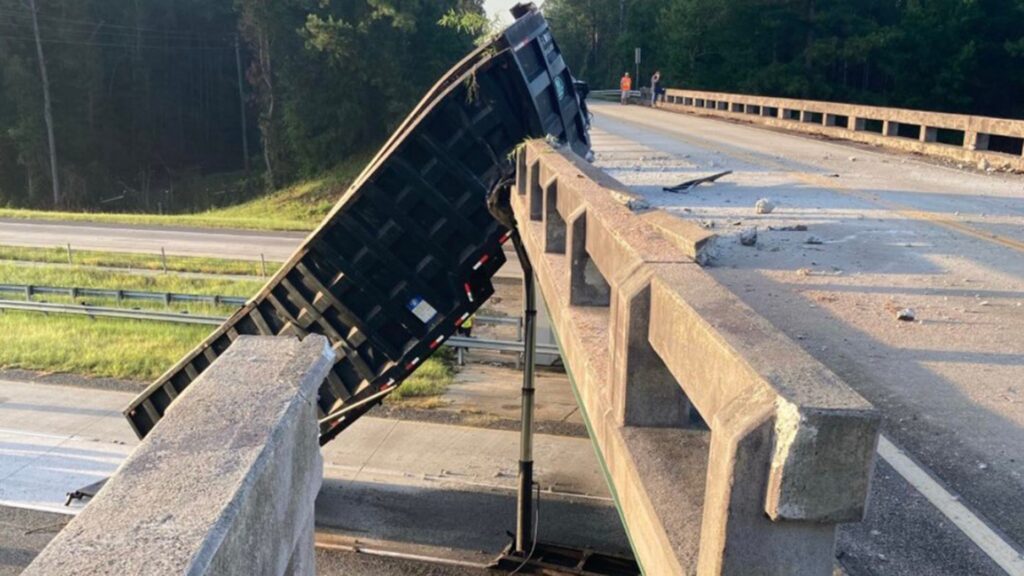
To help trucking companies in planning their routes, there are apps out there that can help drivers know where the problem bridges are. These apps draw from the geometric databases maintained by state and local bridge owners, then use Google or Bing maps to overlay the route with bridges that have clearances below the required height. The driver or planner can then look for alternate routes.
Obviously even the best laid plans sometimes fail. Large overheight loads are not the real problem. Sometimes equipment that is tied down on a low boy can come loose and one good bounce is all that is needed to make contact. This is common on bridges where only some girders get hit, but others survive. The dynamic action of the suspension or movement of the load made the difference.
Railroad bridges are often the lowest bridges on a route. These bridges are generally rather old and usually haven’t been improved since they were originally built. Due to the immense changes it would take to raise grade on a railroad, there isn’t much incentive by the railroad to do anything about this. And since those bridges are usually privately owned, there isn’t much the highway authority can do about it either.
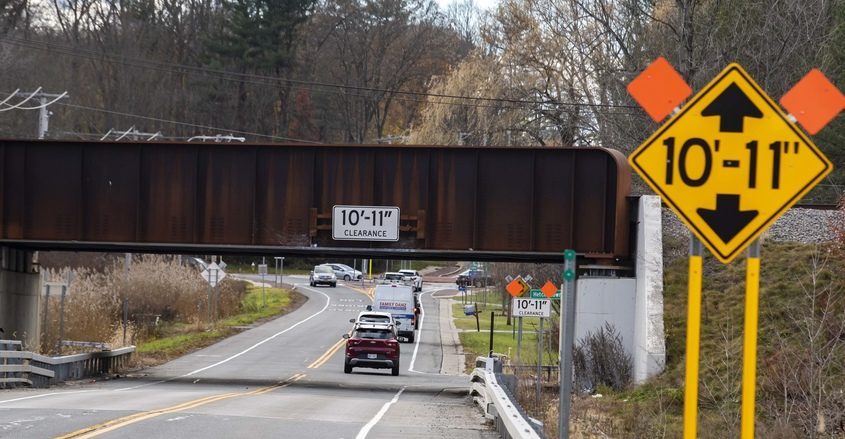
Low bridges have a huge impact on commerce, more than you would probably think. Oversize loads need to get from A to B. Think modular homes, wind turbines, bridge girders, airplane parts, the Spruce Goose, the Space Shuttle – just to name a few.
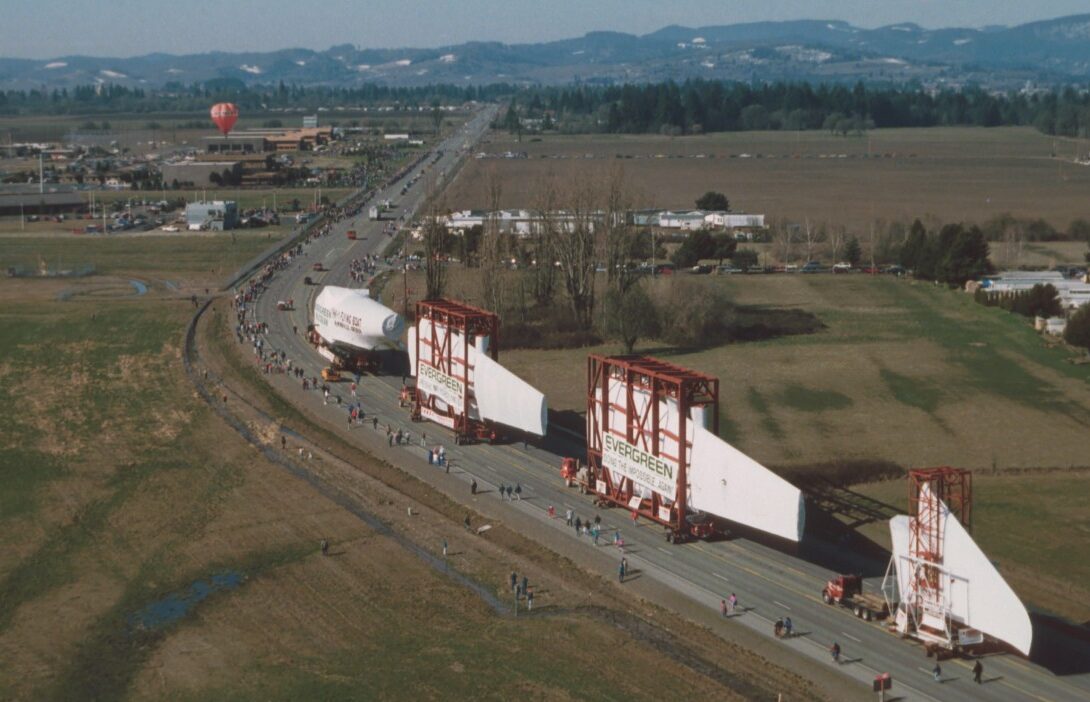
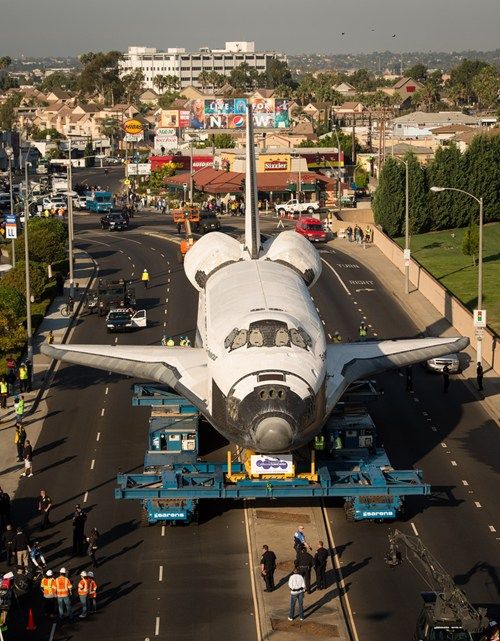
Low bridges in rural areas can often hamper the ability to build longer bridges. If there are no suitable routes to get tall girders to a bridge site, this will often drive the selected bridge’s type and size. Shorter spans can be used, but with more foundations, which has an adverse cost and environmental impact.
So how do engineers react to an overheight hit? We analyze the problem and find a solution. Steel bridge members, such as sway frames on through trusses or portals can be heat straightened. This is applied heat which can help “heal” yielded metal back into shape. For severely damaged members, the bad stuff is cut out and new material fabricated and installed. This is complicated by the fact that some members are crucial to the stability of the bridge while others are not. Sometimes load must be applied to make pieces fit up or to make sure that members are participating once in place. In some cases temporary falsework is needed to support a structure temporarily while the permanent repairs are made.
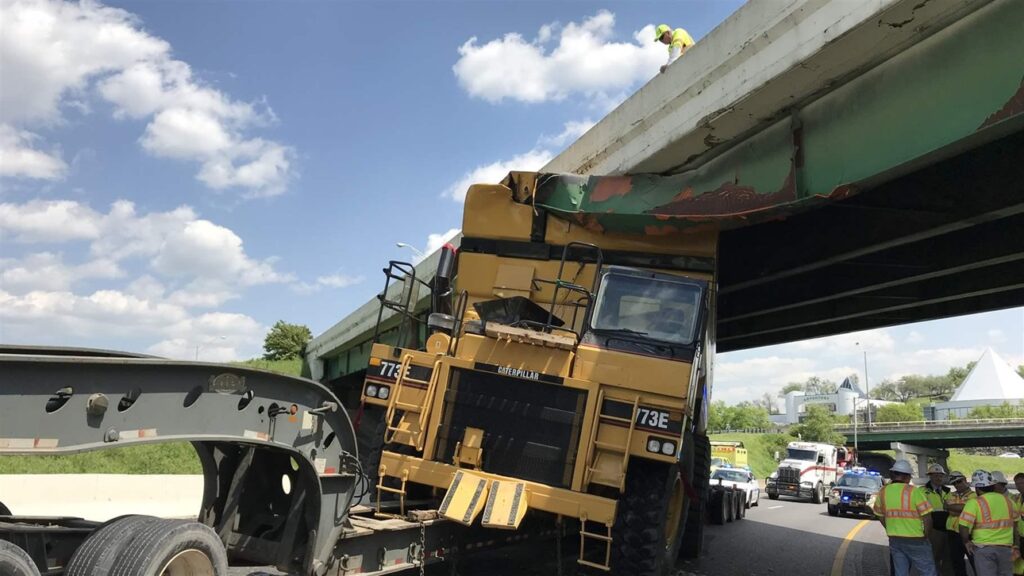
Concrete is a little less delicate and bit more forgiving. Box girders have a bottom slab that acts like a diaphragm to absorb more impact loading. Thus, box girder bridges are usually bullet proof. But if these bridges were built on falsework and cast in place, they are generally not some of the lowest bridges since the falsework would generally be set no lower than 16 foot 6 inches in most modern designs.
Prestressed concrete girders are more delicate. The prestressing strand in the high impact zone is contained in the bottom flange. Since the flanges are discrete elements, they can be severely damaged by lateral loads that tend to bend the girder out of plane (weak direction). The tendency for many designs to only use partial depth intermediate diaphragms doesn’t help the situation since the bottom flanges are not braced. A diaphragm’s function is to brace the compression or top flange of a girder, not the tension or bottom flange in the ordinary sense, thus why partial depth diaphragms are favored. Full depth diaphragms are being specified more and more on bridges built over other highways, but even with this design severe damage can result.
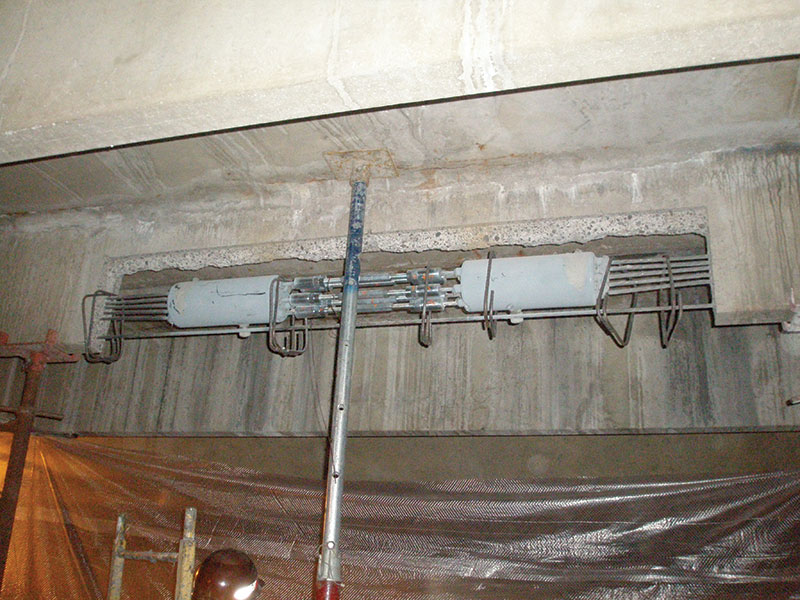
A minor hit could spall concrete from the flange and expose the strands. This is usually easily repairable. A more severe hit might sever some strands. In these cases, commercially available GRABB-IT strand couplers can be used to tie the strands back together, however this merely restores the ultimate strength of the girder. Once the prestressing strand is severed, the pre-compression in the section is lost for good and only external post tensioning can restore it.

The most severe hit would be one where a majority of the strands are severed, resulting is a substantial loass of pre-compression int he section. Or where there is extensive damage to the web, thus destroying any ability to resist shear loads. In these cases, girder replacement can be the more prudent, or in extreme cases, the only solution. Girder amputation is a complicated task. In an end span, the end diaphragm would need to be excavated and removed and potentially a portion of the approach slab. This gets messy in a hurry. Continuous spans are also painful to do any type of surgical repair on.
In some cases, entire spans are replaced, especially if multiple girders are impacted. In some cases, different, shallower sections can be utilized to increase the vertical clearance where a span must be replaced. Even a few inches can statistically improve a bridge’s chances of never being hit again.
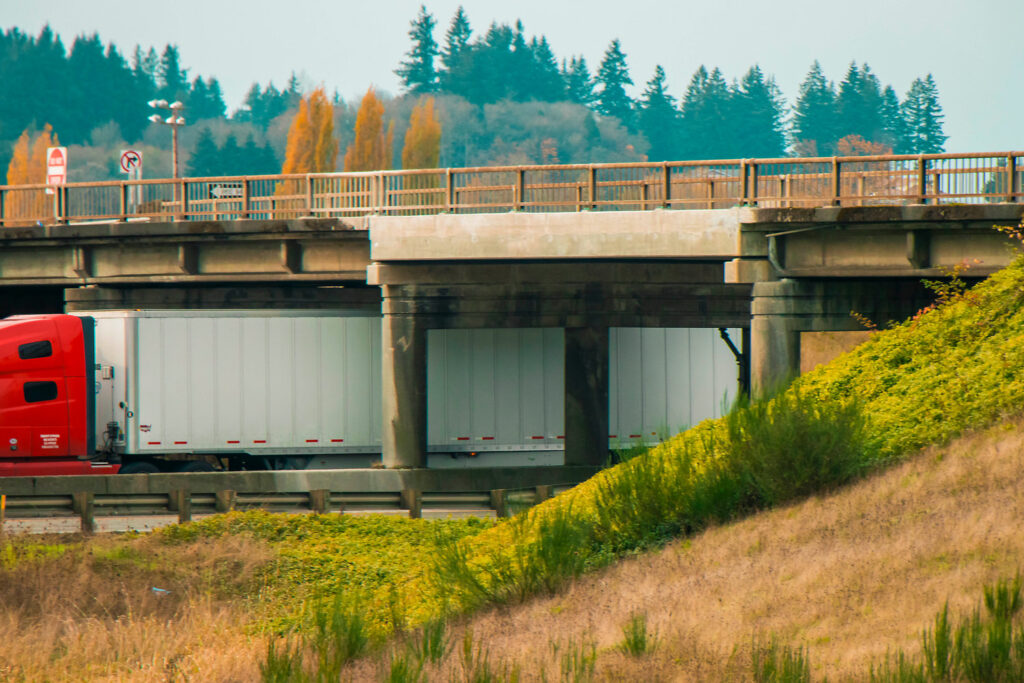
Overheight hits are costly to the US transportation system, a system already showing its age. Low clearance by itself is not going to make a bridge fall down, but these geometric issues usually don’t get addressed until the bridge nears the end of its useful life and needs replacement for other reasons. Our infrastructure is severely underfunded and unfortunately addressing low clearance in and of itself is not a high priority.
Recovering the cost of property damage is hit and miss. If the offending vehicle is not identified, often the owner must foot all of the bill to fix the problem. If the vehicle is located, the owner can pursue a claim against the insurance company. This may or may not result in full restitution depending on how aggressive the owner wants to fight the issue, taking into account other liabilities that existed. It is rare that owners are made whole. This means that repairs or replacements often fall to the taxpayer. Equally often, those projects become emergencies, which further burden the limited resources the owners have to do other work on the highway system, making a bad problem worse.
“Low bridge, everybody down. Low bridge, cause we’re coming to a town…” – Low Bridge by Thomas S. Allen, 1913. Not just on the Erie Canal, but on pretty much every highway in America.
Views: 883